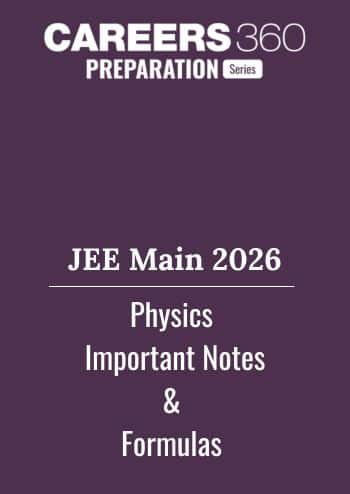Spontaneity in Thermodynamics - Practice Questions & MCQ
Quick Facts
-
29 Questions around this concept.
Solve by difficulty
For a spontaneous process at room temperature , which of the following statements is true regarding the entropy change
and the surroundings?
Estimate the temperature range for which the following standard reaction is product favored:
Given that the standard enthalpy change for the reaction is
and the standard entropy change
Directions: In the following questions, a statement if Assertion (A) is followed by a statement of reason (R).
Assertion: Decrease in free energy causes spontaneous reaction.
Reason: Spontaneous reactions are invariably exothermic.
Mark the correct choice as:
Latest: Free All-India JEE Main 2026 Mock Test - Attempt Now
JEE Main Sample Papers: Physics | Chemistry | Maths | Top 30 Repeated Questions
JEE Main QP & Mock: Previous 10 Year Questions | Chapter Wise PYQs | Mock test Series
JEE Main Most Scoring Concept: January 2025 Session | April 2025 Session | Overall
In which case, a spontaneous reaction is possible at any temperature
The spontaneity means, having the potential to proceed without the assistance of an external agency. The processes which occur spontaneously are
(i) flow of heat from colder to warmer body.
(ii) gas in a container contracting into one comer.
(iii) gas expanding to fill the available volume.
(iv) burning carbon in oxygen to give carbon dioxide.
Which of the following is correct for spontaneity of a cell?
Concepts Covered - 2
Entropy and criteria of the spontaneity of a chemical process:
The entropy change of chemical reaction together with entropy change of surrounding determine spontaneity of a chemical process under a given set of condition.
$\Delta \mathrm{S}_{\text {Total }}=\Delta_{\mathrm{r}} \mathrm{S}-\frac{\Delta_{\mathrm{r}} \mathrm{H}}{\mathrm{T}}$
1. In nature, all process are Irreversible followed by an increase in entropy. Entropy of universe tends towards a maximum.
$S_{\text {Universe }}>0$
2. $\Delta \mathrm{S}_{\text {sys }}+\Delta \mathrm{S}_{\text {surr }}=0$ for reversible process and $\mathrm{S}_{\text {sys }}+\Delta \mathrm{S}_{\text {surr }}>0$ for irreversible process
3. $\Delta$S for a cyclic process and at the equilibrium state is zero.
4. For a reversible process
$\mathrm{S}_{\text {Total }}$ or $\Delta \mathrm{S}_{\text {Universe }}=0$ So, $\quad \Delta S_{\text {system }}=\Delta S_{\text {surrounding }}$
5. For the adiabatic reversible process entropy change is zero.
$\begin{aligned} & \Delta \mathrm{S}_{\text {Total }}=0 \text { so } \\ & \text { Hence } \Delta \mathrm{S}_{\text {system }}=\Delta \mathrm{S}_{\text {surrounding }}\end{aligned}$
6. Entropy change associated which change in temperature from T2 to T1 at constant pressure P is given as
$\Delta \mathrm{S}=2.303 \times \mathrm{C}_{\mathrm{P}} \log \frac{\mathrm{T}_2}{\mathrm{~T}_1}$
$\mathrm{C}_{\mathrm{p}}=$ Molar heat capacity at constant pressure
Some Examples Of Entropy Change
1. When a rubber band is stretched, entropy decreases because the macromolecules get uncoiled and hence arranged in a more ordered manner that randomness decreases.
2. When an egg is boiled, the entropy increases because denaturation occurs resulting in a change of proteins from helical form into random coiled form.
3. Molecules kept in large-volume containers will have high entropy.
4. Cases of increase in entropy—(l) dissolution of a solute in water (2) decomposition of compound (3) vaporization and fusion (4) expansion of ideal gas from one container to an evacuated chamber.
4. The decrease of entropy cases is crystallization, combination.
5. Entropy is directly proportional to atomic weight for example—I2 > Br2 > Cl2
6. Entropy is directly proportional to the number of bonds example—Ethane > ethylene > ethylene
Criteria for Spontaneous Change
Processes that involve an increase in entropy of the system (ΔS > 0) are very often spontaneous; however, examples to the contrary are plentiful. By expanding consideration of entropy changes to include the surroundings, we may reach a significant conclusion regarding the relation between this property and spontaneity. In thermodynamic models, the system and surroundings comprise everything, that is, the universe, and so the following is true:
$\Delta S_{\text {univ }}=\Delta S_{\text {sys }}+\Delta S_{\text {sur }}$
$\begin{aligned} & \Delta S_{\text {univ }}>0 \text { spontaneous } \\ & \Delta S_{\text {univ }}<0 \text { nonspontaneous (spontaneous in opposite direction) } \\ & \Delta S_{\text {univ }}=0 \text { reversible (system is at equilibrium) }\end{aligned}$
Entropy change of surroundings,
$
\begin{aligned}
& \Delta \mathrm{S}_{\text {surr }}=\frac{\Delta \mathrm{H}_{\text {sutr }}}{\mathrm{T}}=-\frac{\Delta \mathrm{H}_{\mathrm{sys}}}{\mathrm{~T}} \\
& \Delta \mathrm{~S}_{\text {toal }}=\Delta \mathrm{S}_{\text {sys }}+\left(-\frac{\Delta \mathrm{H}_{\mathrm{sys}}}{\mathrm{~T}}\right)
\end{aligned}
$
1. The objects are at different temperatures, and heat flows from the hotter to the cooler object. This is always observed to occur spontaneously. Designating the hotter object as the system and invoking the definition of entropy yields the following:
$\Delta S_{\mathrm{sys}}=\frac{-q_{\mathrm{rev}}}{T_{\mathrm{sys}}} \quad$ and $\quad \Delta S_{\mathrm{surr}}=\frac{q_{\mathrm{rev}}}{T_{\mathrm{surr}}}$
2. The objects are at different temperatures, and heat flows from the cooler to the hotter object. This is never observed to occur spontaneously. Again designating the hotter object as the system and invoking the definition of entropy yields the following:
$\Delta S_{\mathrm{sys}}=\frac{q_{\mathrm{rev}}}{T_{\mathrm{sys}}} \quad$ and $\quad \Delta S_{\mathrm{surr}}=\frac{-q_{\mathrm{rev}}}{T_{\mathrm{surr}}}$
3. The temperature difference between the objects is infinitesimally small, $T_{\text {sys }} \approx T_{\text {surr }}$, and so the heat flow is thermodynamically reversible. See the previous section’s discussion). In this case, the system and surroundings experience entropy changes that are equal in magnitude and therefore sum to yield a value of zero for $\Delta \mathrm{S}_{\text {univ }}$. This process involves no change in the entropy of the universe.
Criteria of spontaneity in terms of Gibb's Free energy change
The Gibb's free energy function is defined as
$\mathrm{G}=\mathrm{H}-\mathrm{TS}$
For any general process, change in Gibb's free energy can be defined as
$\Delta \mathrm{G}=\Delta \mathrm{H}-\Delta(\mathrm{TS})$
For reactions which occur at constant Temperature and pressure, Gibb's free energy change can be defined as
$\Delta \mathrm{G}=\Delta \mathrm{H}-\mathrm{T} \Delta(\mathrm{S})$
Gibb's Free energy change can be defined as the following (for reactions only)
$\Delta \mathrm{G}=-\mathrm{T} \Delta \mathrm{S}_{\text {universe }}$
Thus, the condition of spontaneity in terms of Gibb's free energy change is
$\Delta \mathrm{G}<0 \quad\left[\because \Delta \mathrm{~S}_{\text {universe }}>0\right]$

Study it with Videos
"Stay in the loop. Receive exam news, study resources, and expert advice!"














